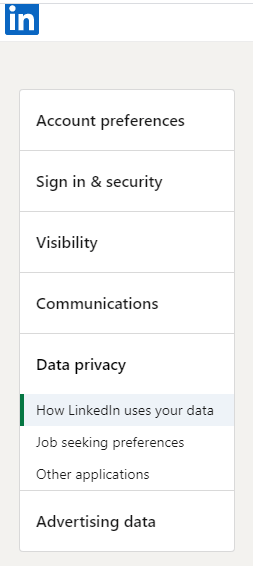Social media is a world of its own where billions of people of all backgrounds, ages, and nationalities reside. This translates to a large database of plenty of information that can be misused.
Yes, there is a whole lot of information that you put out on social media which is public. For businesses, (good and bad) the social media is mine whose data is rightly analyzed and can reap diamonds.
Whether it’s good or bad, we’ll try and find out from this blog or better do give this blog a thorough read and you be the judge.
What We Are Going To Discuss In This Blog?
List of Contents

Social Media Scraping is the process of capturing and extracting data from social networks, such as Facebook, YouTube, Instagram, Twitter, Linked In, and other social media platforms.
This data lets you sense consumer behavior, trends, and sentiments. This technique is often used for business research to get psychographic and demographic data. This way businesses can parse through the innumerous worth of gigabytes of user data that is apt for them.
How Does Social Media Scraping Or Social Media Data Scraping Work?
Social media data scraping uses a scraper which is a piece of code that extracts the HTML data received from the API (Application Programming Interface) library of a social media platform.

When an API is connected to a web scraping tool, it allows you to connect the API to another database software and collect data. You can even set up automatic scraping requests for those times when you aren’t available.
You can either use a readymade scraping tool or if you have a knack for coding, you can create your scraping tool to extract required social data.
What Kind of Data Are We Talking About?
The data that can be extracted is unthinkable, but just to give you an idea, it could be anywhere from the name, age, designation, images, videos, text, contact information such as emails and phone numbers, statistics about followers, gender, preferable products, the list goes on and on
Why Is Social Media Scraping Used?
Big organizations use Social Media Scraping for various reasons and by doing so reap plenty of benefits some of these reasons and benefits are mentioned below –
- Engagement With Audience
- Better Market Research
- Improving Business Strategy
- Better PR Responses
These are fair practices or at least look fair. Moreover, the above practices are carried out by organizations whose intent is to provide better customer service. But, what about organizations that pander to cybercriminals. Read on of what we are talking about –
Millions of records from popular social media accounts are scraped and handed over to cybercriminals. Here are some instances –
A hacker was able to compile a database of 700 million data users from across the globe in a spreadsheet. Moreover, he intends to sell this data for US$ 5000 to the highest paying cybercriminal. When asked how’d he do it? He said that he hacked the API of Linkedin. More specifically, he said that he tricked LinkedIn’s API into giving him records in a way that he was not banned for the same.
Without naming who his customers are or what they would do with this information, he said that the data would probably be used for campaigns that involve malicious hacking.
What’s alarming here is the fact that the hacker didn’t need to access the websites of servers. All of this data is furnished by the users and is scraped using automatic programs.
Last year, a social media broker exposed almost 235 million profiles that were scraped from TikTok, Instagram, and YouTube. Such data is vulnerable to phishing campaigns and spam marketing.
Whether good or bad, you need to be wary of what you are sharing. Apart from that, there are certain precautionary steps you can take –
How much personal information should you share on social media so that you can protect your data from cybercriminals?
- Be Wary Of What You Share On Social Media
Be it your profile pic or any of the fields mentioned on any of the social media platforms, you should be vigilant and not share information that could put you in danger. As far as possible, refrain from furnishing details like address, cellphone, bank account number, number, or any crucial data that exquisitely belongs to your company.
- Be Wary Of Data Privacy Settings

Almost all social media platforms have data privacy settings in place. And, it won’t cost you a penny to take a few seconds or minutes and enable these. Not saying that this will completely stop ads from flashing but at least they’ll be controlled. For instance, when using LinkedIn consider going through these steps –
- Click on the Me icon at the top of the LinkedIn page
- Click on Settings & Privacy
- Click on Data Privacy
We recommend you at least manage the ways your data is used on LinkedIn.
- Refrain From Connecting Apps To Social Media
If an app is not required to access your social media accounts such as Gmail, Facebook, LinkedIn, Instagram, etc it’s better to keep it that way and instead use an email ID to log in or sign-up.
- Know Who Has Your Data
This step is more applicable to organizations whom users trust with their data. Several programs let you know if your data has been picked up.
What Do You Think?
Is Social Media Scraping Good or bad? It won’t be wrong to say that just like everything, even social media data scraping has a good and a bad side. As for the latter, we can be a little vigilant and furnish data that would not put our privacy at risk. Do let us know what your views are on Social Media Scraping in the comments section below.






Leave a Reply